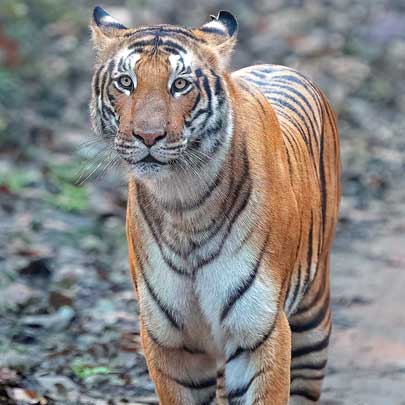The Fascinating Tigers Of Katarniaghat: A Closer Look
Katarniaghat Wildlife Sanctuary, nestled along the Indo-Nepal border in Uttar Pradesh, is a realm of enchantment where the mysterious and magnificent Bengal tigers reign supreme. This article takes a closer look at the fascinating tigers of Katarniaghat, exploring their behaviors, conservation status and the unique ecosystem that sustains them.
1. Majestic Presence:
- The Bengal tigers of Katarniaghat Wildlife Sanctuary command attention with their majestic presence. Renowned for their vibrant orange coats adorned with distinctive black stripes, these big cats epitomize the regal charm of the wild.

2. Behavioral Insights:
-
Solitary Nature: Bengal tigers in Katarniaghat typically exhibit a solitary nature, with adult males and females usually leading independent lives. This behavior helps reduce competition for resources within their territories.

-
Territorial Markings: Tigers in Katarniaghat mark their territories through scent markings, scratches on trees and vocalizations. These territorial markings play a crucial role in communication with other tigers and help avoid confrontations.

-
Nocturnal Activities: Being crepuscular and nocturnal, Bengal tigers in Katarniaghat are most active during the dawn and dusk, utilizing their keen senses to hunt under the cover of darkness.
-
Hunting Techniques: Tigers in Katarniaghat are skilled hunters, relying on their powerful jaws and sharp claws. They often use stealth and ambush tactics to surprise their prey, showcasing remarkable agility and strength.
3. Conservation Efforts:
-
Protected Areas and Corridors: Establishing and maintaining protected areas, along with wildlife corridors, helps create safe spaces for Bengal tigers to thrive while facilitating genetic exchange between different populations.
-
Community Engagement: Involving local communities in conservation initiatives fosters a sense of ownership and responsibility. Educating communities about the importance of coexisting with tigers and implementing measures to mitigate human-wildlife conflicts are integral aspects.
-
Anti-Poaching Measures: Strengthening anti-poaching units and implementing rigorous measures to combat illegal wildlife trade are essential for safeguarding Bengal tigers in Katarniaghat.
-
Research and Monitoring: Ongoing research projects involving tracking, camera trapping, and population monitoring provide valuable data for informed conservation strategies. Understanding tiger behavior and movement patterns aids in implementing effective protective measures.
-
International Collaboration: Collaborating with international organizations, neighboring countries and global conservation initiatives enhances the collective efforts to protect Bengal tigers. Sharing knowledge and resources contributes to a more comprehensive approach to conservation.
4. Habitat Diversity:
- The diverse habitats that form the tapestry of Katarniaghat, providing an ideal home for Bengal tigers. From dense Sal forests to grasslands and wetlands, each ecosystem contributes to the sanctuary's status as a biodiversity hotspot.

This comprehensive insight into the fascinating tigers of Katarniaghat Wildlife Sanctuary aims to deepen understanding and appreciation for these majestic beings while emphasizing the importance of their conservation in the intricate web of nature's balance.












































































